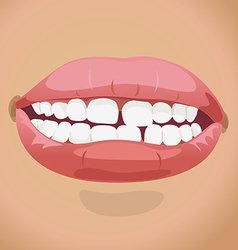You brush your teeth every day, even twice a day, but you’re still being told by your dentist that you are missing areas and need to brush more thoroughly. You aren’t sure how you could possibly be missing areas; after all, you’ve been checking over your pearly whites after you brush them to make sure you got each and every one. You’ve even started carefully brushing over each tooth to try to get in between the gaps. You’re frustrated and you’re beginning to wonder if you’re even actually getting the space in between your teeth or if perhaps you’re doing something wrong. If this sounds too familiar to you, then you might have diastema.
Thankfully, in today’s blog, we’ll be tackling this very issue. The space between your teeth, how you can properly treat it, and size discrepancy in your teeth. At Coventry Dental Care, we strive to provide dental care that will allow you to have healthy, beautiful teeth. By exploring tooth discrepancies, you’ll notice how much different you treat those pearly whites and how you can better follow dental care.
In an article from Colgate Professional, we’ll be covering that nuisance of extra space between your teeth. Even if you’ve had orthodontia, you may still be facing this problem, so take the time to go over treatment options and learn what exactly diastema is.
WHAT IS A DIASTEMA AND HOW DO I TREAT IT?
A diastema is an area of extra space between two or more teeth. The two front teeth of the upper jaw area is where the diastema is most frequently seen. Many children experience diastema as primary teeth fall out, though in most cases these spaces close when the permanent teeth erupt.
Diastemas may also be caused by a tooth size discrepancy, missing teeth or an oversized labial frenum, the tissue that extends from the inside of the lip to the gum tissue where the upper two front teeth are located. Secondary reasons involve oral alignment issues such as an overjet or protrusion of the teeth.
WHAT ARE MY TREATMENT OPTIONS?
Once your dentist or dental specialist has determined the reason for your diastema, a treatment plan will be discussed. The treatment options may include:
- Keep the diastema.
- Orthodontic treatment to move the teeth and close the diastema.
- Use porcelain veneers, very thin pieces of porcelain bonded to the outside of the teeth.
- Crown and bridge work or replacement of teeth with implants (adults only).
If you have an oversized labial frenum, you may be referred to a periodontist for an oral consultation and surgical procedure called a frenectomy. This procedure involves cutting the frenum and then repositioning it to allow for more flexibility. If the frenectomy is conducted on a child, the space may close by itself. If it is a teenager or adult, the space may need to be closed with braces.
A consultation with your dentist is essential to determine which option is the right treatment for you. If you have questions or concerns about diastema or for more dental care, then please don’t hesitate to reach out to us. For your exam and customized treatment plan, contact us at 519-305-9100. We look forward to providing essential dental care for you and your family.
Article taken from:
http://www.colgateprofessional.ca/patienteducation/Diastemas-and-Treatment-Options/article

